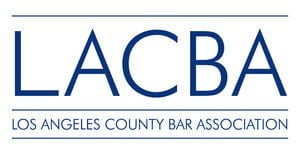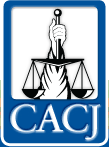Under California law, certain crimes can be charged as either a misdemeanor or felony offense, at the discretion of the prosecutor. Judges also have the option to sentence convicted defendants to either the misdemeanor or felony penalties for the same crimes.

wobbler offense california – torrance criminal law attorney
Why is it that prosecutors and judges have such broad latitude in deciding the fate of defendants? California’s wobbler provision permits them to consider the facts of the crime, the impact on the victim(s), and the defendant’s prior criminal history, if any. The intention is to ensure that criminal penalties better fit the unique circumstances of both the offense and the offender.
Under California law, a “wobbler” is a criminal offense which is neither a felony nor a misdemeanor. In fact, it is both. More specifically, a wobbler is a crime that prosecutors and judges can decide to prosecute and/or sentence as either a felony or a misdemeanor. While prosecutors have the discretion to charge a defendant accused of committing an offense which is a wobbler as a misdemeanor or felony, the judge has the final say in terms of sentencing. For example, if a prosecutor decides to bring felony charges against a defendant—but the judge believes that the circumstances of the case are more consistent with a misdemeanor—then the judge can reduce the charge at sentencing.
How is a wobbler determined to be a felony or misdemeanor?
The facts and circumstances of the crime and the defendant’s prior criminal history influence the prosecutor’s and judge’s decision. If the offense is severe and caused significant property loss or damage and/or injuries to another person, there is a greater likelihood that the offender will be charged with a felony and sentenced accordingly. On the other hand, if the incident in question is the defendant’s first offense and/or there are some mitigating factors which work in the defendant’s favor, there is a higher chance that the offender will be charged with a misdemeanor and receive a lesser sentence. One significant consideration is whether incarceration would hinder any potential rehabilitation that may occur through a diversion program or another penalty, like probation.
Aggravating factors
The existence of aggravating factors is another key consideration in the wobbler determination. Aggravating factors are facts of the case that elevate the perceived severity of a crime.
Examples of aggravating factors include:
- Serious bodily injury or death to a victim.
- Whether alcohol or drugs were involved.
- The victim’s class (e.g. child, woman, law enforcement officer).
- Use of a deadly weapon in the commission of the crime.
- A gun in the possession of the defendant during the offense, regardless of whether it was used in committing the crime.
California wobbler offenses
Several broad categories of offenses are considered wobblers. Generally, they include:
- Assault
- Battery/sexual battery
- Burglary
- Certain DUI/DWI offenses
- Receiving stolen property
- Theft
- Fraud
Criminal Penalties in California
In California, misdemeanor offenses generally result in a sentence of less than one year in county jail and/or a fine of up to $1,000. Felony penalties include larger fines and prison sentences longer than one year. However, with California’s recent realignment legislation designed to reduce chronic prison overcrowding, some defendants who are convicted of felonies are sentenced to serve their sentence in the county jail.
Once a felony, not necessarily always a felony
In California, individuals convicted of felonies lose certain privileges and rights. However, persons convicted of misdemeanors retain many of these privileges and rights. For example, while convicted felons are not permitted to own or possess firearms, those who have been convicted of a misdemeanor usually retain this privilege. In some cases when offenders have been convicted of a wobbler felony, they can petition the court to have their convictions reduced to a misdemeanor, and in so doing, restore their privileges and rights.









